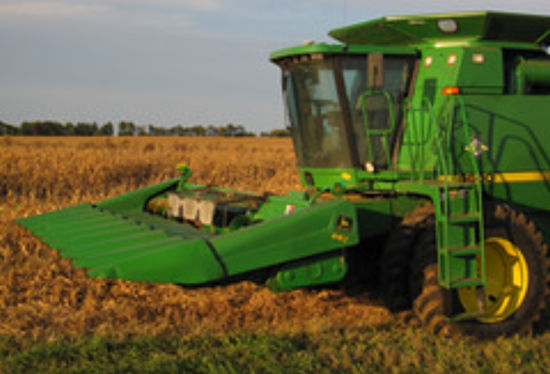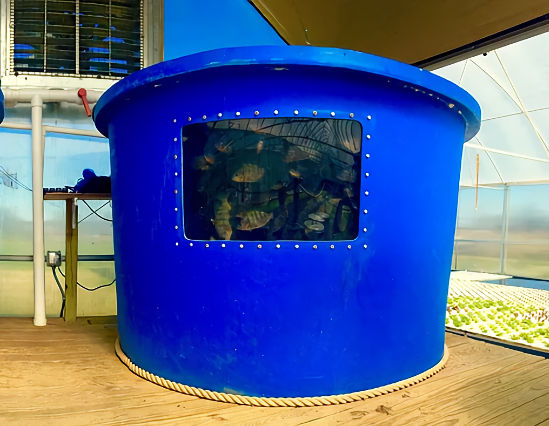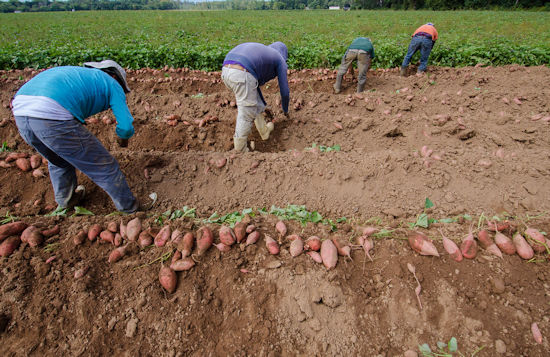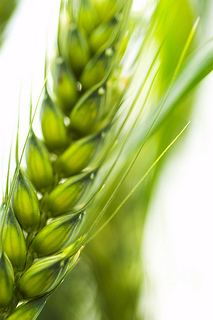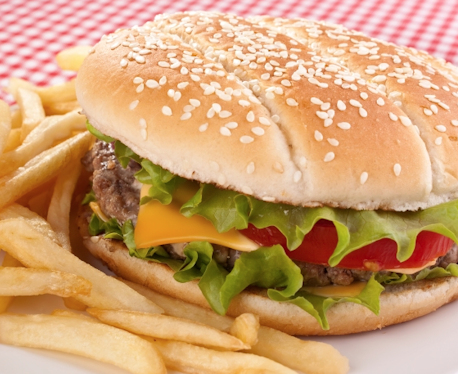Modern society gives little thought to farming and the agricultural industry, but behind the scenes, things are changing as farmers, engineers, and scientists work together to discover new ways to feed the world’s almost 7.8 billion people.
In parts of Africa, they still might be farming like this:
But that is very inefficient and couldn’t possibly feed the world.
Sustainability
Modern agriculture is heavily dependant on mechanized equipment. Without modern farming practices, the vast majority of the world’s population would starve. In 1870, 47.6% of the workforce was employed in agriculture. By 1900 it had fallen to 35.7%. At that point, farmers started using gasoline-powered tractors, allowing them to work more land while requiring fewer laborers. By 1929 only 22% of the workforce was employed in farming. The next major advance was chemical fertilizers, pest control, and hybridized plants, which further increased productivity… now less than 3% of the workforce feeds the other 97%.
In other words, compared to the 1870s, an additional 44% of the workforce is now available to produce other things since their jobs were automated by farm equipment. The Luddites would say, oh, look at all those poor displaced farm laborers. But I’m sure most office workers are glad they aren’t sweating in the fields and instead are working in nice comfy offices (or even from the convenience of their home). But are modern agricultural practices sustainable?
Weather
Agriculture has always been at the mercy of extreme weather events like Hurricane Ida. In the past, when transportation was more localized, a drought or a hurricane could cause starvation or at least severe shortages of food. Today with our globalized food distribution system, shortages are less severe and shorter-lived, and people in Lousiana probably won’t starve because a hurricane destroyed their crops.
Aquaponics Video:
Hydroponics, Aquaponics, and AquaCulture
One way to reduce the impact of pests and weather is to move “farming” indoors. A hundred years ago, this would have been unthinkable or “crazy,” but today, the trend is just that. Hydroponics and Aquaponics farms are producing mass quantities of a variety of vegetables. You have probably purchased some from your local grocery store without knowing it.
Note: Although similar, aquaponics and hydroponics are slightly different. Both hydroponics and aquaponics involve growing plants without soil, in a water medium. With hydroponics, nutrient solutions are added to the water but, in aquaponics, the plants are fed using organic matter produced by fish and other aquatic organisms like crayfish and snails.
Aquaponics Fish Tank at Sustainable Harvesters in Texas
Hydroponics Video:
Commercial hydroponics are currently producing:
- Tomatoes
- Lettuce
- Green beans (Climbing bean)
- Peppers
- Spinach
- English Cucumbers
Aquaculture:
Aquaculture and Aquaponics are two entirely different things. While aquaponics grows plants in a water bed, aquaculture is primarily about fish farming. According to the U.S. Department of Agriculture (USDA), “Aquaculture is the production of aquatic organisms under controlled conditions throughout part or all their lifecycle. Its development can help meet future food needs and ease burdens on natural resources.”
In other words, instead of having to catch fish, they are often farmed and “harvested” in mass quantities.
The USDA promotes a sustainable aquaculture sector to help produce “an abundant, safe, and affordable supply of seafood products”. USDA scientists support and conduct research that helps develop new aquaculture technologies that “maintain healthy ecosystems, evaluate aquatic animal health, and inform consumers on the healthfulness and sustainability of responsible aquaculture production”.
Farm Labor Shortages
Traditionally, migrant workers picked the crops in the U.S., and often these workers came from Central American countries. Covid restrictions have impacted the availability of these workers, H2A visa agriculture guidelines are strict, and the process may take some time to resolve. This may be a relatively short-lived problem as more farms become automated and require fewer laborers.
Microgreens, Urban Farming And The Push For Local Business
The growth of indoor farming has created the opportunity to grow vegetable crops in or near cities. Using “grow lights,” former factories and basements are being converted into city farms. Since they are climate controlled and local, they can grow specialized crops like herbs and “microgreens”.
Microgreens are simply the miniature version of vegetables and herbs when still in their tiny sprout form. Typically, they include beets, Swiss chard, broccoli, mustard, arugula, amaranth, and peas. According to WebMD, “Early research has indicated that microgreens contain up to 40% more phytochemicals (beneficial nutrients and components) than their full-grown counterparts.”
You might think that hydroponics would be very water-intensive, but because of the reduced evaporation, hydroponic farms actually use much less water than their outdoor cousins.
High-Tech Vertical Farming
Vertical farming is highly automated with computer-controlled growing conditions providing plants the optimal light and nutrients, free of herbicides and pesticides.
Organic Farming
With more emphasis on organic farming, major innovations in farming methods are occurring at a more rapid pace. Engineering and farming are being combined in systems like “rail farming” to increase productivity and reduce the labor-intensive nature of farming.
Rail farming uses a small dolly on rails to access the garden, so there is no need for a wheelbarrow or to walk on the soil. This reduces soil compaction and the necessity of walkways maximizing growing space. All implements and tools are operated from a dolly that runs over the top of the raised beds, including seeders, planters, and cultivators.
Permaculture
The philosophy behind permaculture is one of working with rather than against nature. It strives to be more sustainable, relies more on trees than annuals, and creates a “closed-loop ecosystem”. Recycling of nutrients is a major component of permaculture. It is critical to return wastes (via compost or mulch) to the soil and plants in a permaculture garden rather than haul it away and import new fertilizer.
Conclusion:
One of the major hidden trends today is in the area of farming and agriculture. We think of farming as large fields and big tractors, but things are changing behind the scenes. The ideas of permaculture and organic farming are changing how crops are grown and the technology used to feed the billions of inhabitants on planet earth.
You might also like:


